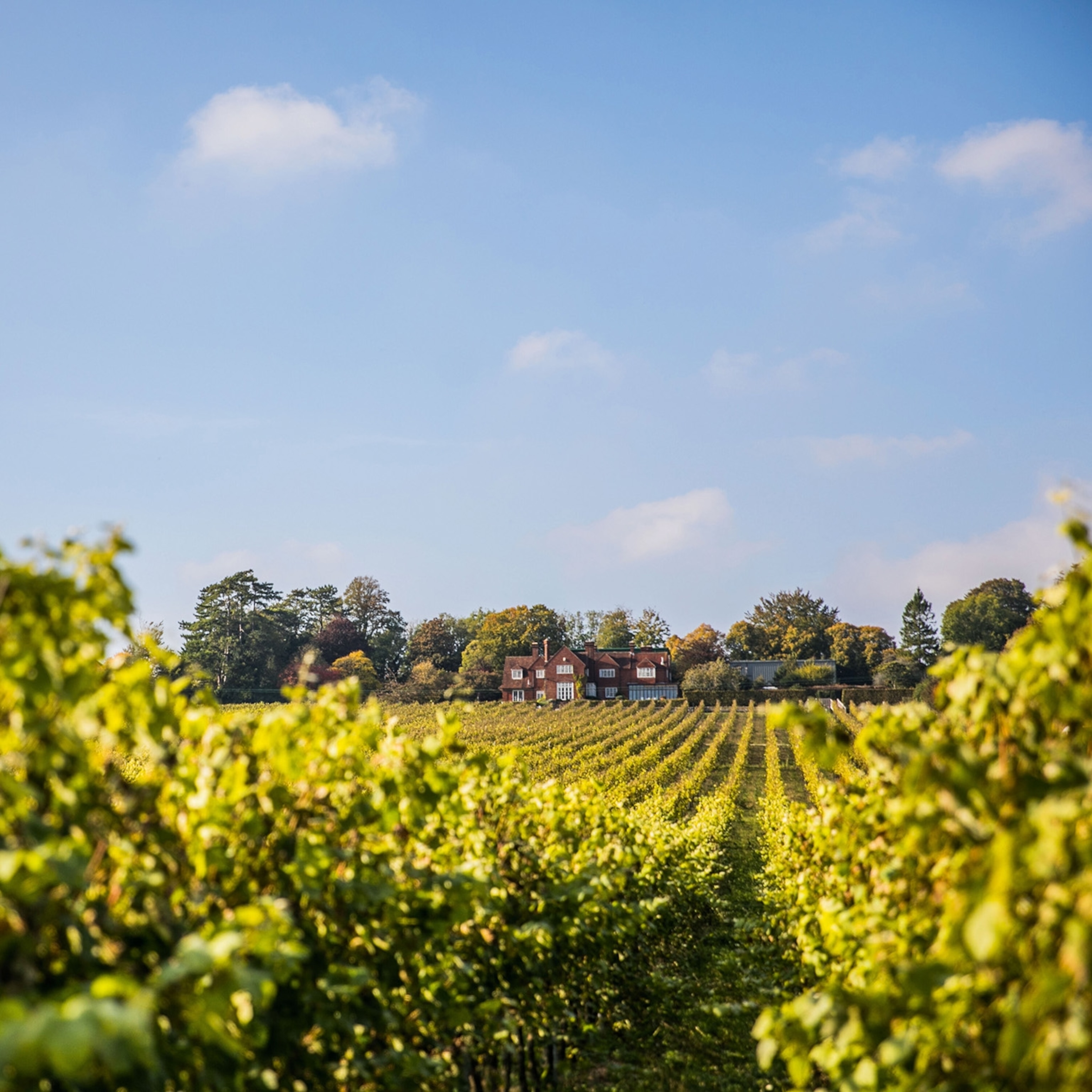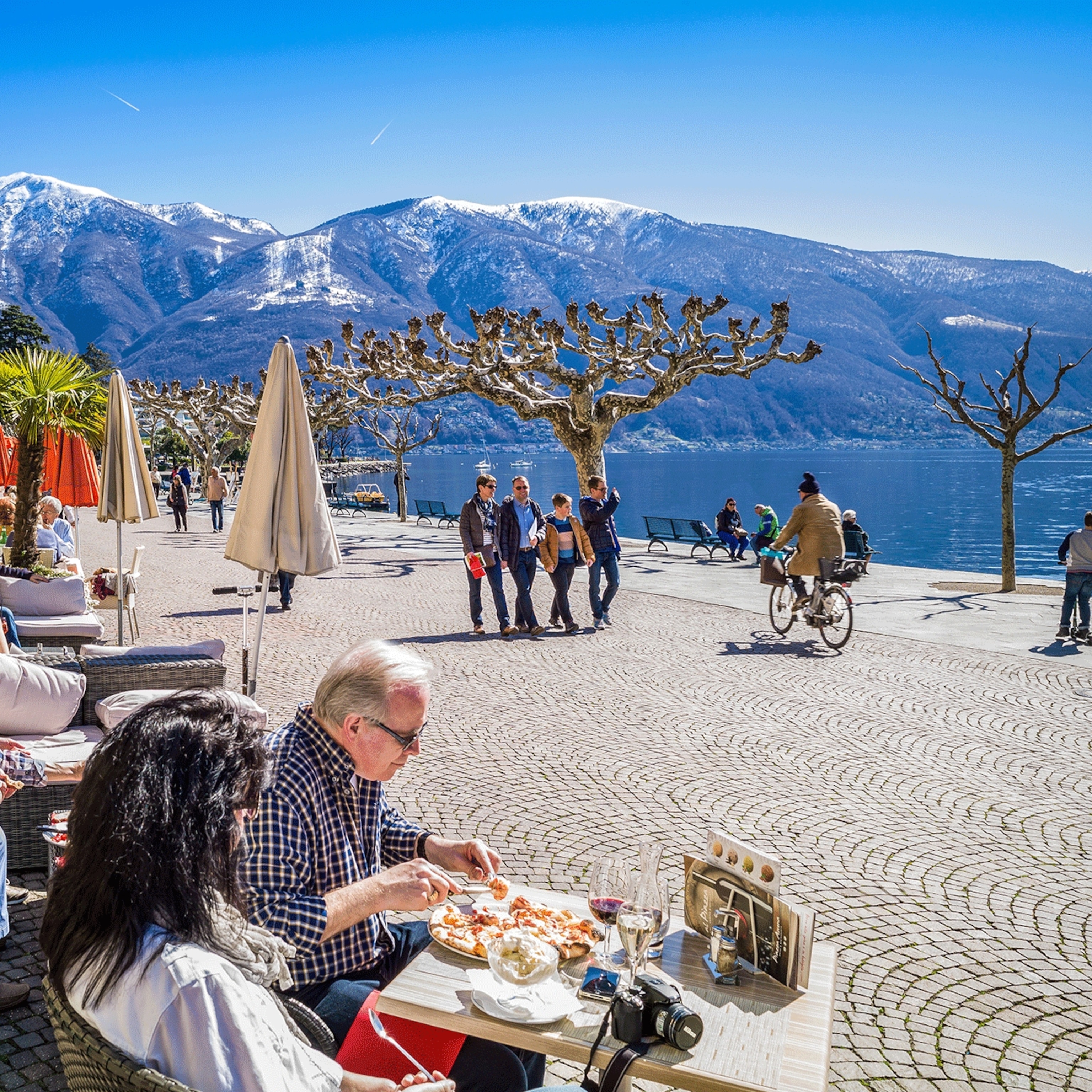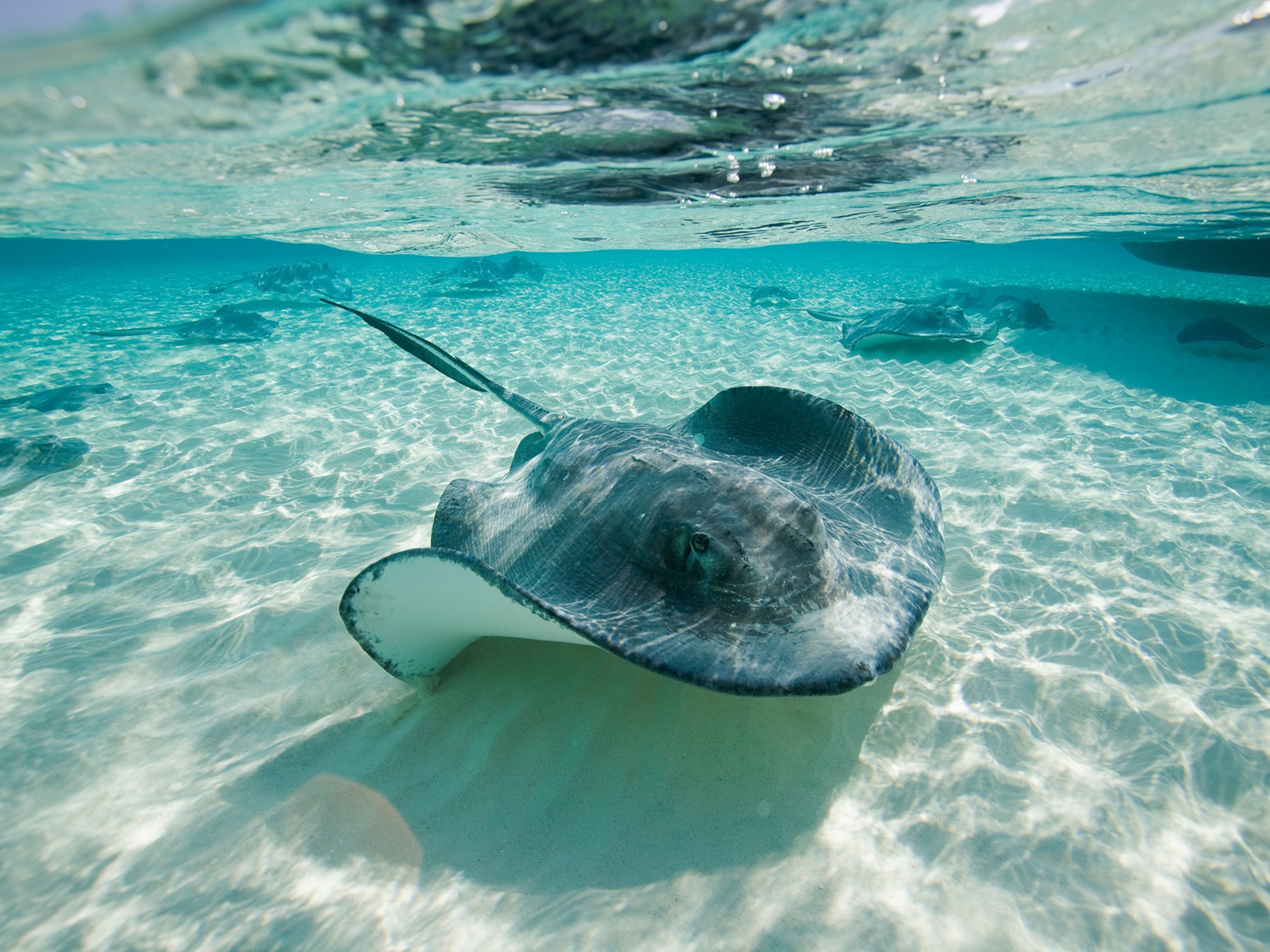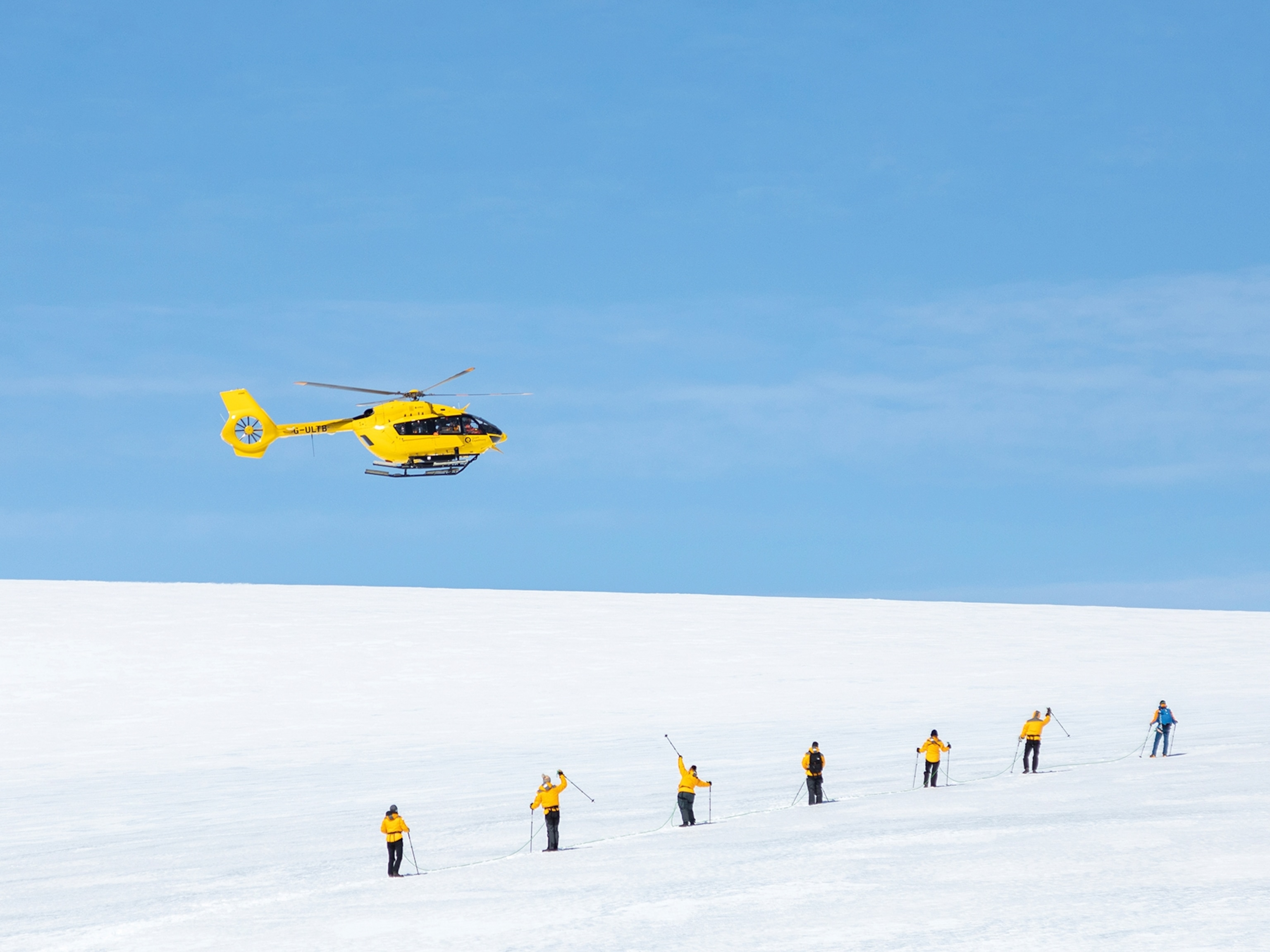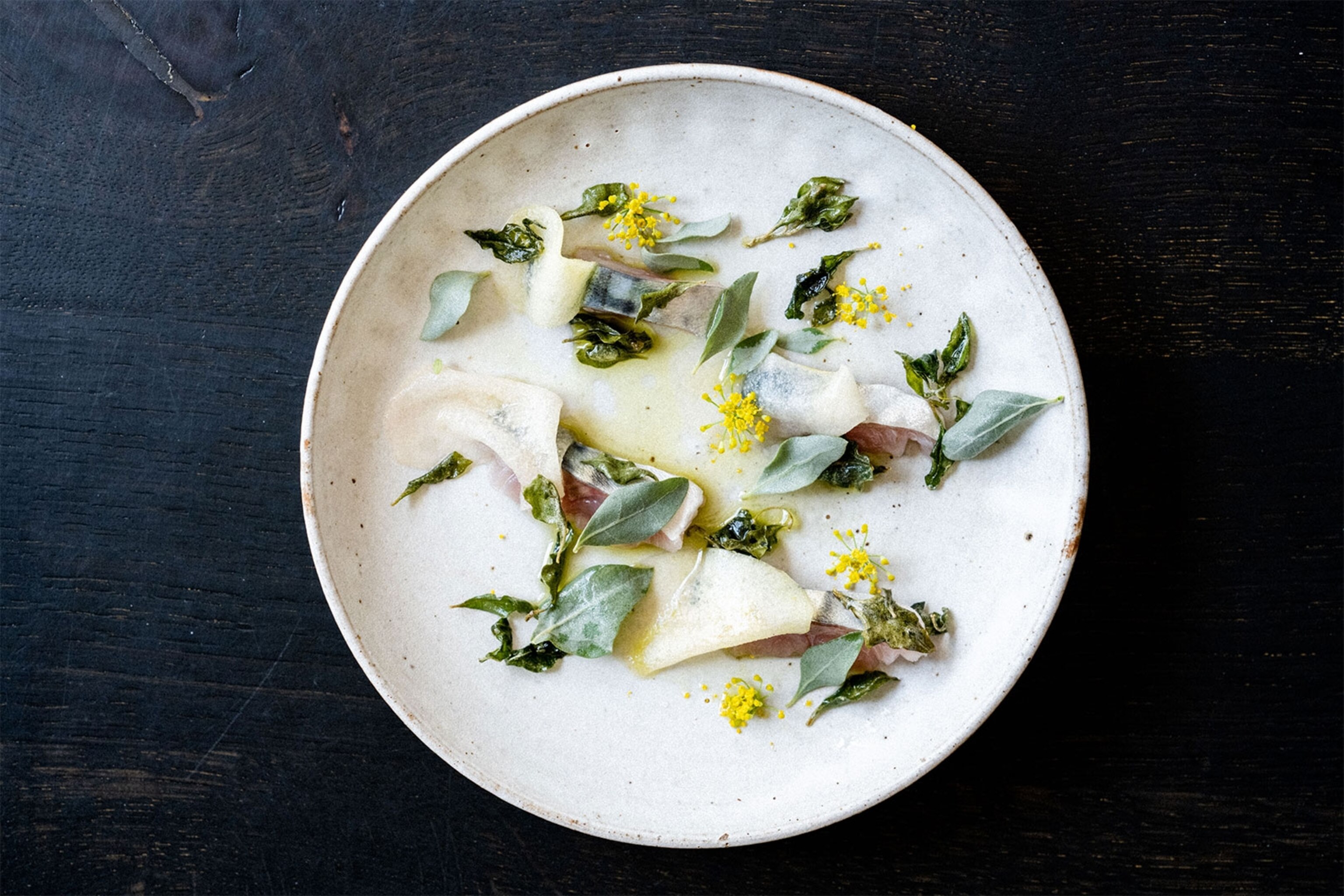
3 culinary innovators making waves on the British coast
British coastal dining has never been so good, as a raft of talented and innovative chefs eschew the big cities to take advantage of seaside inspiration.
Harriet Mansell, Robin Wylde in Lyme Regis, Dorset
The woodruff palmiers from Robin Wylde are going down a storm in Lyme Regis. The restaurant’s name is a play on words meant to evoke the wild foraged ingredients that play a large role in the concept. Robin Wylde was born out of a successful pop-up in 2019 in the picturesque Dorset harbour town, with its famous curved harbour (immortalised by John Fowles in The French Lieutenant’s Woman) and its pastel-coloured townhouses framed by soaring golden cliffs wedged into a sheltered cove.
Its creator, chef Harriet Mansell, credits some of her success to her proximity to the sea. “I can think clearly here. The sea is very calming, with an amazing feeling of freedom and space. On top of that, the coastal climate is phenomenal,” she says.
Since the beginning of the year, Harriet has diversified, creating a community bakery in the restaurant, offering dandelion root and sticky toffee cookies, and gorse and winter citrus Danishes, alongside nettle, rosemary and wildflower savoury pinwheels and seaweed and onion pastries. Bookings are available only on selected dates, which she releases a few months ahead. “I only have two spaces left before July,” she grins. Harriet also runs a small plates wine bar in Lyme Regis called Lilac, which focuses more on the local larder, but always incorporates wild food.
Harriet’s passion for all things wild stems from an introduction in early childhood, thanks to an education where left field-looking teachers encouraged pupils to spend time combing the countryside for the more accessible wild edibles.
Her food is innovative, partly influenced by an early stint working at Copenhagen’s ground-breaking restaurant Noma, which has been voted best in the world five times. “But it was the wild food focus that lured me in. I learned about stuff I’d never heard of before and went picking with foragers, bombing around Denmark’s beaches and forests. I learned so much it was mindboggling,” she recalls.
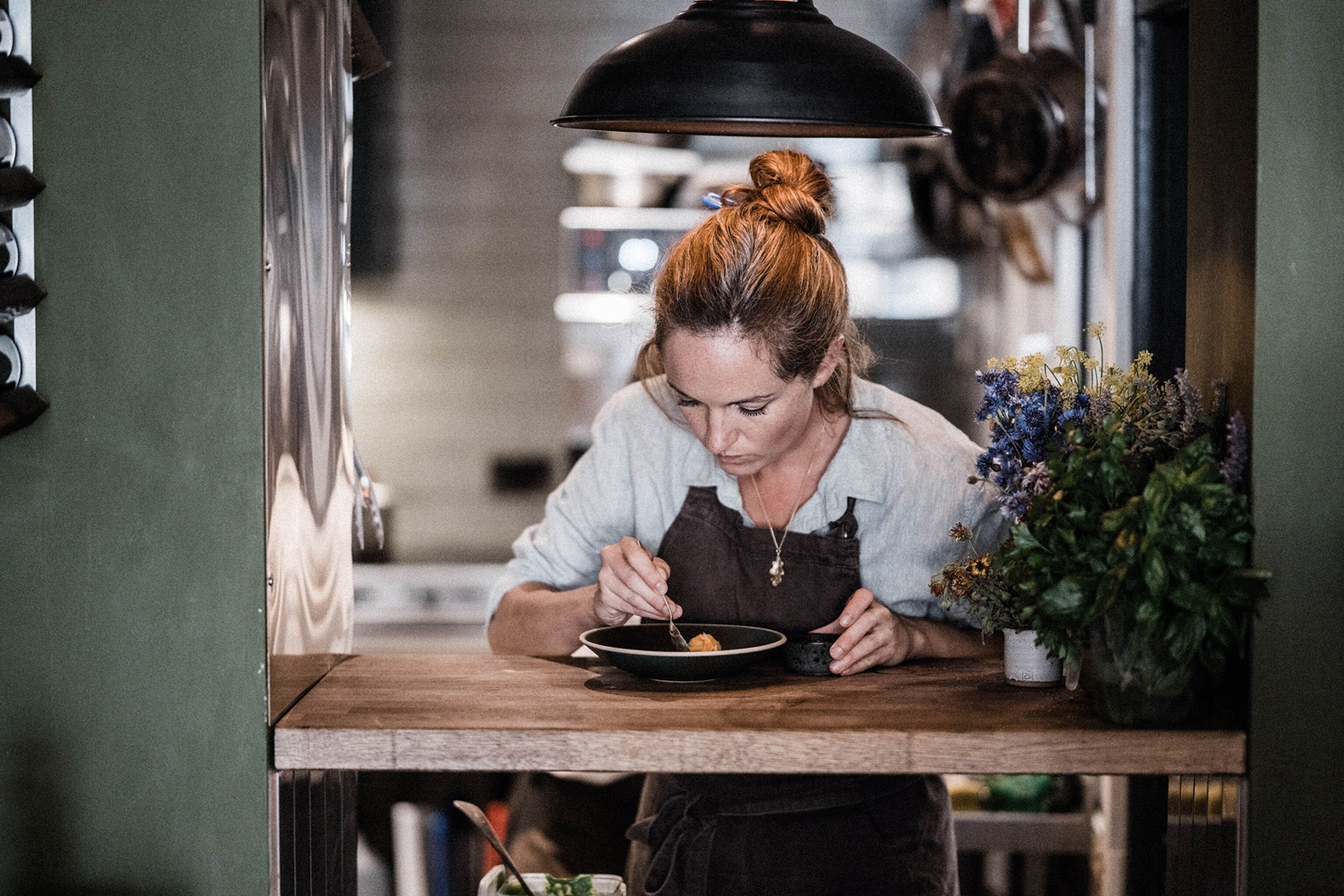
Her favourite wild ingredients are coastal plants. “They take on the flavours of their environment, which is very special to me,” she says. Top of her list is black mustard leaf, alexanders, sea purslane and salt bush — the latter she cooks in the oven in a little oil. “You get this little salty, crunchy leaf that seasons a dish without the need to add salt,” she explains.
Harriet is of course keen to spread the word, and thanks to her new booking system she now can, with various chef residencies planned — she was at London’s Carousel at the beginning of March, where she served dishes such as bay croustade with woodruff goat’s curd, topped with barbecued alexanders.
Dinner service at the restaurant often turns into an impromptu Q&A session as diners drill her for ideas using wild food, even signing up for one of her regular foraging walks that she offers around Lyme Regis. “People love to try new things, to feel connected to nature and the world around them,” shrugs Harriet, who was once a superyacht chef.
Her current favourite dish is a black dumpling with gurnard, black garlic puree, black mustard broth, alexander buds and pickled wire weed. “The seaweed pops in your mouth like caviar,” she says.
And her current favourite technique? “We wanted to work with flowers a couple of years ago, so we started experimenting. We took the little red flowers from a quince tree and put them in a sugar syrup, which we let boil by a mistake. The room exploded with the aromas of a cherry bakewell. Now we’re making a flowering quince kombucha,” she replies. No wonder chefs are beating a path to her door to eat here.
Simon Rogan, L'Enclume in Cartmel, Cumbria
Weave your way along the narrow, limestone cottage-edged streets in Cartmel and you’ll reach L’Enclume. The humble architecture of the three-Michelin-star restaurant with rooms (enclume is French for anvil — the 800-year-old building used to be a smithy) provides a dramatic contrast to the exquisitely presented food that pays homage both to the nearby sea and to the Southern Lake District’s softer rolling hills. “We’ve got the best of both worlds here,” says its founder, chef Simon Rogan.
L’Enclume is Simon’s flagship restaurant, which celebrated its 20th anniversary last year, along with gaining its coveted third star. He now has several other sites, including one in London and three in Hong Kong, where the common thread is sustainability and local sourcing. Indeed, L’Enclume and Roganic Hong Kong have both been awarded Michelin Green stars.
So how did this Southampton boy end up building a sustainable culinary empire from the small village of Cartmel in the Lake District? “I wanted my first restaurant to offer something a bit different. And I wanted to go back to my early days spent foraging in the New Forest. I was attracted as much by the building as its surroundings,” he explains.
“The coast has always been a massive part of my life. I’ve worked in London, Paris and other big cities, but I’ve always returned to the coast, or very near it. I’m hypnotised by the sea,” he says.
And the coast — or rather its plants — played a key role in building his success, says Simon. “Before we established our farming operation, wild food was a big part of L’Enclume. We’re only a mile from Humphrey Head, where we picked dulse, samphire, sea purslane and so on,” he says. Word soon spread of the magic being created with these ingredients and the accolades followed.
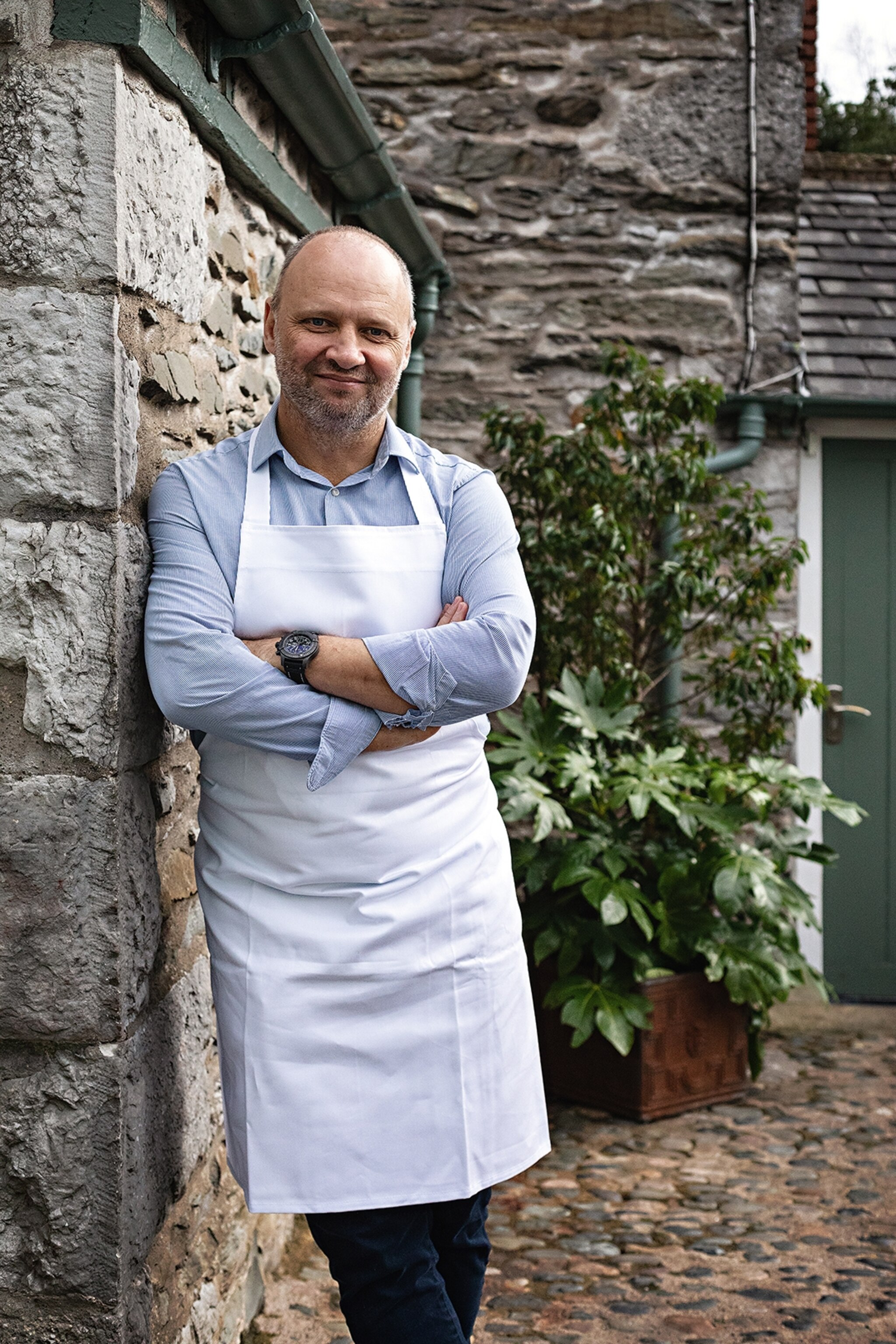
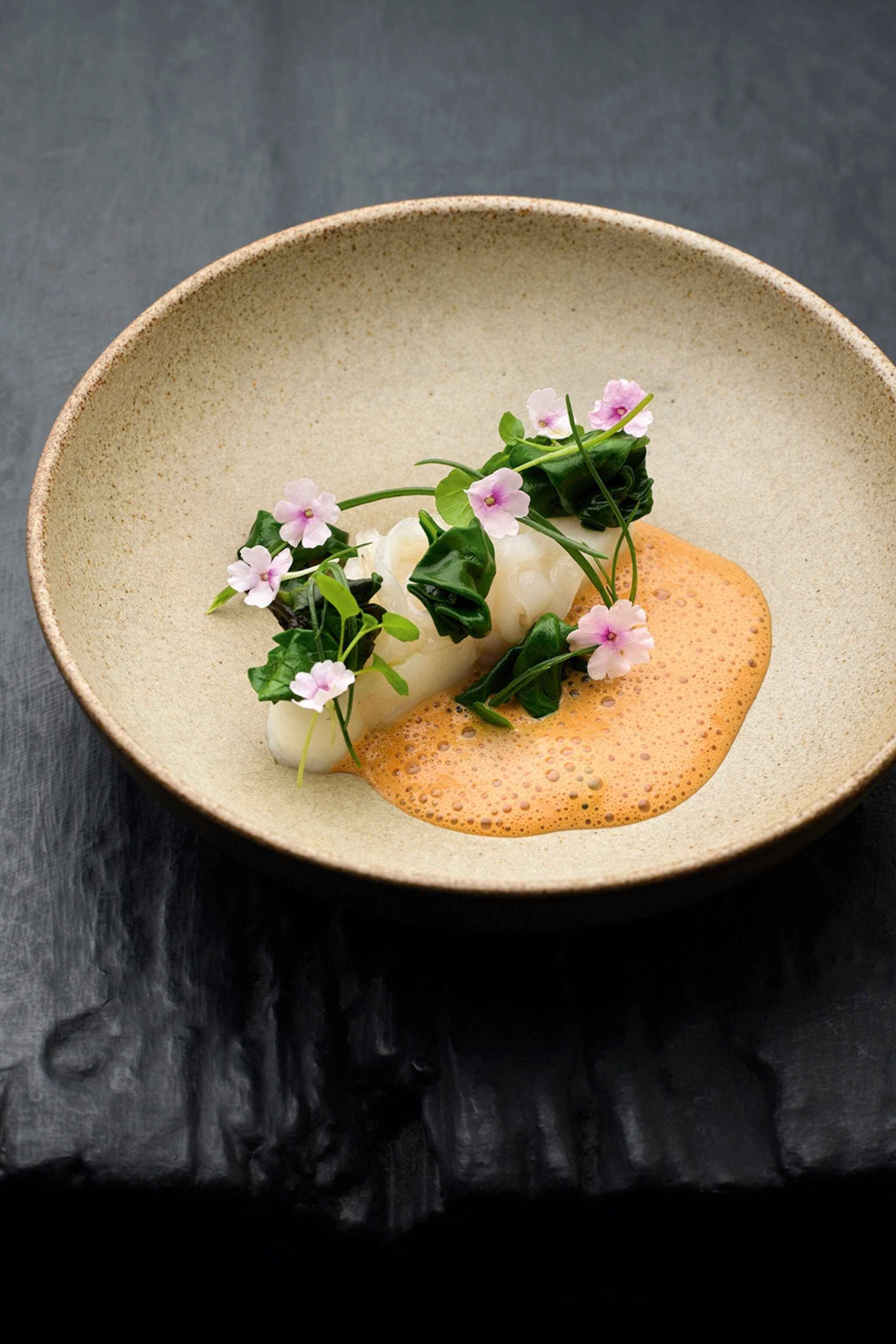
Today, 75% of the produce for Rogan’s UK restaurants comes from his sustainable farm just up the road. Add to that a dedicated kitchen busily preserving, fermenting, pickling and drying those ingredients, and he says they’ve almost achieved their goal of being entirely self-sufficient. “A lot of the ingenuity and ideas at L’Enclume start with the farm, and that’s where we focus our energy and imagination,” says Simon.
For example, they’ve discovered techniques that utilise every part of a plant. “We don’t want to waste a thing,” he says. One day the team tried fermenting zaino courgettes. “The resulting liquid is very reminiscent of lemon juice. Of course, we don’t use lemons in our cookery as we can’t grow them here, but any chef will tell you that lemon is a vital component in a kitchen — you need acidity to heighten flavours. But once fermented, these courgettes produce something very like lemon juice — it’s quite incredible. Now we ferment gallons of the stuff,” he enthuses.
So, what next for Simon? “I’ve achieved pretty much everything I’ve ever wanted to since opening, so now it’s about spreading the gospel according to L’Enclume,” he replies, with a grin.
Roganic Hong Kong is a case in point. Generally, pretty much everything is imported to Hong Kong, with ingredients travelling lengthy food miles. But not at his restaurant, which opened in 2019. Simon and his team set up a network of organic farmers in the verdant New Territories and was rewarded with Hong Kong’s first Michelin Green star. Inspired by his actions, other chefs there have followed.
“When we first arrived in Hong Kong, there was zero recycling — everything went in the bin. Then when we returned after Covid we couldn’t believe the changes. Those organic farms had doubled in size and lots of chefs have been coming to see what our green star is all about, which is very satisfying to see,” he says.
Pamela Brunton, Inver in Loch Fyne, Scotland
To open a restaurant in a remote location requires confidence. To open in a remote spot offering fine dining with locally produced and foraged foods requires self-belief — lots of it. But after eight years running Inver, their restaurant with rooms, chef Pamela Brunton and partner Rob Latimer are booked up weeks, even months, ahead for their six stylish cabins that come with a breakfast hamper stuffed with inventive freshly baked pastries.
There are views over the loch and Old Castle Lachlan through the restaurant’s windows, which run its length, while the homey, Scandi-chic interior provides a relaxed backdrop to Pamela’s elegant plates.
“It used to serve fish and chips,” laughs Pamela, who first spotted the building on a cold and grey November day. “We loved the sense of light and space, and the connection to the landscape. We had been looking for our own place in Scotland for a few years before we saw this, and I said if this isn’t it, then I don’t know where is,” she recalls.
Born on the East Coast of Scotland in Carnoustie, Pamela worked her way around various top kitchens, including Sweden’s Fäviken, squeezing in a Masters in Food Policy along the way “to help me understand better what was going on with food and the environment.” Her education paid off, as Inver boasts a Michelin Green star.
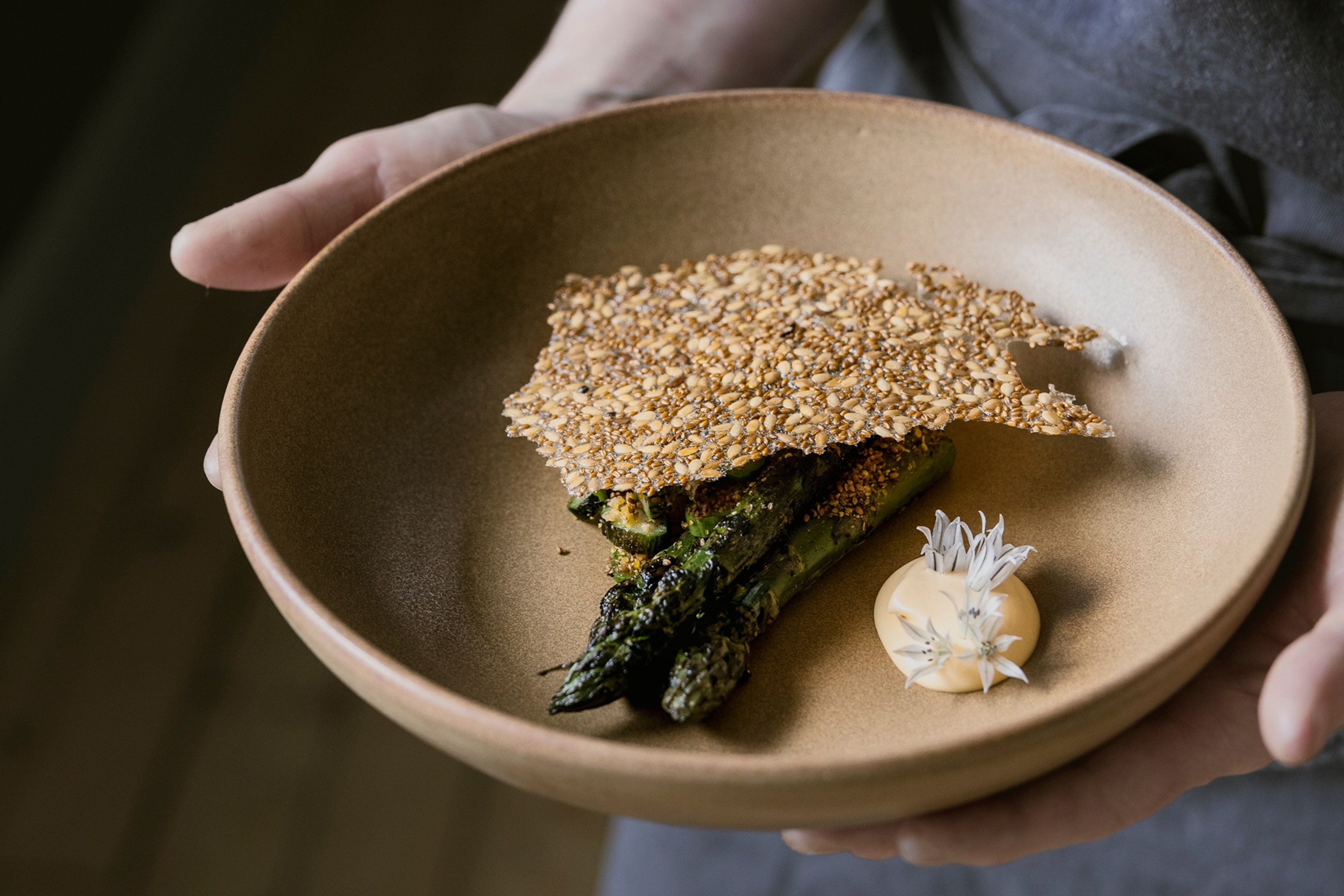
As well as building a network of local suppliers, she forages for some ingredients herself, turning out dishes such as langoustine and sorrel, and courgette, Corra Linn and meadowsweet. Pamela credits the landscape and her proximity to the water as a key inspiration.
Her produce highlights include lamb and beef from native breeds that graze on west coast beaches, and various types of seaweed — to flavour sauces and condiments, fried as a garnish, and added to seawater biscuits for cheese.
“A big part for us is telling the story of where we are,” explains Pamela. A new dish features a fermented barley pancake modelled on a traditional Scottish bannock, but there are plenty of more exotic ingredients incorporated too, such as black limes and Indian spices.
“We’re not trying to be a Scottish historical theme restaurant — we have a very inclusive approach to ingredients and flavours. I believe Scotland is a country that has learned a lot from the world, and from our immigrant culture,” Pamela says. Roll on her first cookbook, due to be published next year.
Sign up to our newsletter and follow us on social media:
Facebook | Instagram | Twitter
